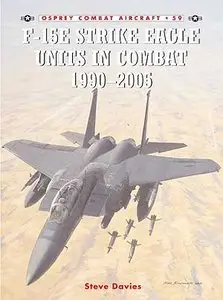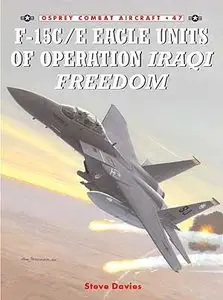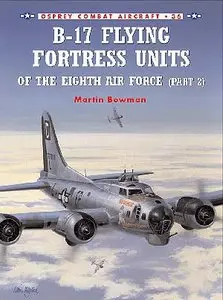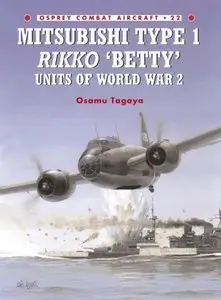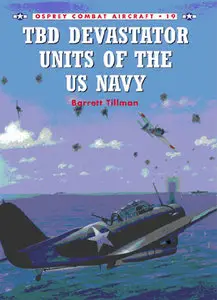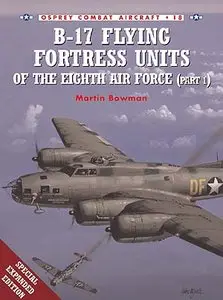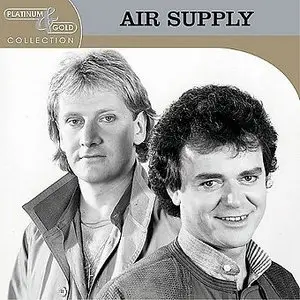| Su | Mo | Tu | We | Th | Fr | Sa |
|---|---|---|---|---|---|---|
| 30 | 31 | 1 | 2 | 3 | 4 | 5 |
| 6 | 7 | 8 | 9 | 10 | 11 | 12 |
| 13 | 14 | 15 | 16 | 17 | 18 | 19 |
| 20 | 21 | 22 | 23 | 24 | 25 | 26 |
| 27 | 28 | 29 | 30 | 1 | 2 | 3 |
Attention❗ To save your time, in order to download anything on this site, you must be registered 👉 HERE. If you do not have a registration yet, it is better to do it right away. ✌

What’s in a name? More than you think.
Your name isn’t just a label – it’s a vibe, a map, a story written in stars and numbers.
At KoalaNames.com, we’ve cracked the code behind 17,000+ names to uncover the magic hiding in yours.
✨ Want to know what your name really says about you? You’ll get:
🔮 Deep meaning and cultural roots
♈️ Zodiac-powered personality insights
🔢 Your life path number (and what it means for your future)
🌈 Daily affirmations based on your name’s unique energy
Or flip the script – create a name from scratch using our wild Name Generator.
Filter by star sign, numerology, origin, elements, and more. Go as woo-woo or chill as you like.
Shakira - Did It Again
Date: 23 Sep 2009 23:24:55
Shakira - Did It Again
Jimmy Kimmel Live 18th Sept 2009, TV Channel abc
SAT.TV | 2 min 27 s | HDTV (1280x720) | Audio: AC3, 384 Kbps, 48 KHz, 6 Channel | 59.940fps | Format: mpg, video codec: MPEG2 | 182 MB | RS.com/UL.to
Genre: Pop
Jimmy Kimmel Live 18th Sept 2009, TV Channel abc
SAT.TV | 2 min 27 s | HDTV (1280x720) | Audio: AC3, 384 Kbps, 48 KHz, 6 Channel | 59.940fps | Format: mpg, video codec: MPEG2 | 182 MB | RS.com/UL.to
Genre: Pop
Four Carry Nuts - Bausubstanz EP (2000) [Aurinko Records]
Date: 23 Sep 2009 23:23:41
Four Carry Nuts - Bausubstanz EP (2000) [Aurinko Records]
Vinyl Source | MP3 (192kbps, 44.1KHz) | No Cue, No Log | WEB Covers Included | 25 MB | 17:34
Psychedelic Trance | Label: Auriko Records | Catalog Number: Aurinko 004
RAR (5% Recovery Record) | megaupload.com, box.net
Vinyl Source | MP3 (192kbps, 44.1KHz) | No Cue, No Log | WEB Covers Included | 25 MB | 17:34
Psychedelic Trance | Label: Auriko Records | Catalog Number: Aurinko 004
RAR (5% Recovery Record) | megaupload.com, box.net
Combat Aircraft 059, F-15E Strike Eagle Units in Combat 1990-2005
Date: 23 Sep 2009 23:12:35
Combat Aircraft 059, F-15E Strike Eagle Units in Combat 1990-2005
Author: Steve Davies, Illustrated by: Chris Davey
Osprey Publishing | November 10, 2005 | ISBN-10: 1841769096 | 96 Pages | PDF | 47.4 MB
Author: Steve Davies, Illustrated by: Chris Davey
Osprey Publishing | November 10, 2005 | ISBN-10: 1841769096 | 96 Pages | PDF | 47.4 MB
Osprey Publishing Description:
The F-15E Strike Eagle has been at the center of every single conflict in which the US has been involved since 1990. This remarkable aircraft has repeatedly struck targets where no other Coalition, NATO or US fighter has been able to go, breaking records for combat endurance and effectiveness. In the last decade, the Strike Eagle has been consistently upgraded to accommodate the latest weapons and electronic equipment. This book provides a thorough study of this versatile strike aircraft, as well as exploring its role in Operation Desert Storm and, more recently, the Balkans, Afghanistan and Iraq.
Combat Aircraft 047, F-15C/E Eagle Units of Operation Iraqi Freedom
Date: 23 Sep 2009 23:12:32
Combat Aircraft 047, F-15C/E Eagle Units of Operation Iraqi Freedom
Author: Steve Davies, Illustrated by: Chris Davey
Osprey Publishing | May 25, 2004 | ISBN-10: 1841768022 | 96 Pages | PDF | 36.1 MB
Author: Steve Davies, Illustrated by: Chris Davey
Osprey Publishing | May 25, 2004 | ISBN-10: 1841768022 | 96 Pages | PDF | 36.1 MB
Osprey Publishing Description:
The F-15C/E has formed the backbone of US and Coalition operations in the Middle East for over a decade, patrolling the skies over northern and southern Iraq as part of Operations Northern Watch and Southern Watch. F-15Cs policed the skies for Iraqi aircraft operating in contravention of no-fly zone agreements, whilst the F-15E was constantly dropping weapons onto the Iraqi SAM and AAA emplacements that engaged Coalition aircraft undertaking this mission. The USAF’s use of the F-15 in the region culminated with Operation Iraqi Freedom, which was launched in mid March 2003 in order to liberate the people of Iraq and ensure the destruction of Saddam Hussein’s alleged weapons of mass destruction. In doing so, the F-15C was used to protect friendly troops and aircraft from any last-ditch attempt to use the Iraqi Air Force. In the event, the F-15Es of the 4th Fighter Wing saw most prolific use, engaging Iraqi armour before Coalition ground troops moved forward, and providing close air support to soldiers and Special Forces as they came into contact with the enemy.
Combat Aircraft 042, B-29 Superfortress Units of the Korean War
Date: 23 Sep 2009 23:12:29
Combat Aircraft 042, B-29 Superfortress Units of the Korean War
Author: Robert F. Dorr, Illustrated by: Mark Styling
Osprey Publishing | December 17, 2003 | ISBN-10: 1841766542 | 96 Pages | PDF | 47.9 MB
Author: Robert F. Dorr, Illustrated by: Mark Styling
Osprey Publishing | December 17, 2003 | ISBN-10: 1841766542 | 96 Pages | PDF | 47.9 MB
Osprey Publishing Description:
This book is the story of a majestic bomber of the propeller era flying perilous combat missions against a sleek, nimble warplane of the jet age, the Soviet MiG-15. A very heavy bomber and a sky giant during World War 2, at that time the B-29 was the most advanced combat aircraft in the world. By the time North Korea attacked its southern neighbour in 1950, the B-29 had been reclassified a medium bomber. Many of its crew members had fought their war and settled down to raise families and begin careers only to be recalled to fight another war on a distant Asian peninsula.
Combat Aircraft 036, B-17 Flying Fortress Units of the Eighth Air Force (Part 2)
Date: 23 Sep 2009 23:12:03
Combat Aircraft 036, B-17 Flying Fortress Units of the Eighth Air Force (Part 2)
Author: Martin Bowman, Illustrated by: Mark Styling
Osprey Publishing | November 13, 2002 | ISBN-10: 1841764345 | 96 Pages | PDF | 45.1 MB
Author: Martin Bowman, Illustrated by: Mark Styling
Osprey Publishing | November 13, 2002 | ISBN-10: 1841764345 | 96 Pages | PDF | 45.1 MB
Osprey Publishing Description:
The Boeing B-17, which has come to epitomise the American war effort in Europe, took the fight to Germans from the late summer of 1942 through to VE-Day. Its primary operator in Western Europe was the 'Mighty Eighth', who controlled 27 bomb groups for much of the war. This second of two volumes covers the 14 Bomb Groups of the Third Air Division. First hand accounts, period photography, profile artworks and nose art scrap views bring to life aircraft from each of the groups within the Third Air Division.
Combat Aircraft 022, Mitsubishi Type 1 Rikko 'Betty' Units of World War 2
Date: 23 Sep 2009 23:12:00
Combat Aircraft 022, Mitsubishi Type 1 Rikko 'Betty' Units of World War 2
Author: Osamu Tagaya, Illustrated by: Mark Styling
Osprey Publishing | April 25, 2001 | ISBN-10: 184176082X | 96 Pages | PDF | 40.2 MB
Author: Osamu Tagaya, Illustrated by: Mark Styling
Osprey Publishing | April 25, 2001 | ISBN-10: 184176082X | 96 Pages | PDF | 40.2 MB
Osprey Publishing Description:
The most produced Japanese bomber of the war the G4M saw action on every front from the first day of the Pacific conflict through to VJ-Day. The 'Betty's' very long range made it a key weapon during the opening year of the war. However, to achieve this, the aircraft was built with very little protective armour for its crew or fuel tanks, and Allied pilots soon exposed its extreme vulnerability. In the first in a series of volumes examining the key Japanese aircraft of WW2, Dr Osamu Tagaya details the G4M's extensive combat history, and lists all the units which operated the bomber.
Combat Aircraft 020, TBD Devastator Units of the US Navy
Date: 23 Sep 2009 23:11:51
Combat Aircraft 020, TBD Devastator Units of the US Navy
Author: Barrett Tillman, Illustrated by: Tom Tullis
Osprey Publishing | August 25, 2000 | ISBN-10: 1841760250 | 96 Pages | PDF | 43.5 MB
Author: Barrett Tillman, Illustrated by: Tom Tullis
Osprey Publishing | August 25, 2000 | ISBN-10: 1841760250 | 96 Pages | PDF | 43.5 MB
Osprey Publishing Description:
The first monoplane aircraft ordered by the US Navy for carrier operations, the Douglas TBD Devastator was designed to fulfil a requirement for a new torpedo bomber. Just 129 were built, and when it entered service it was the most modern aircraft of its type anywhere in the world. Its only real taste of action came on 4 June 1942 in the pivotal Battle of Midway, when 35 were shot down in a clash with Japanese A6M Zero fighters. The aircraft was replaced by the Grumman Avenger weeks later.
Combat Aircraft 018, B-17 Flying Fortress Units of the Eighth Air Force (Part 1)
Date: 23 Sep 2009 23:10:25
Combat Aircraft 018, B-17 Flying Fortress Units of the Eighth Air Force (Part 1)
Author: Martin Bowman, Illustrated by: Mark Styling
Osprey Publishing | March 25, 2000 | ISBN-10: 1841760218 | 112 Pages | PDF | 28.2 MB
Author: Martin Bowman, Illustrated by: Mark Styling
Osprey Publishing | March 25, 2000 | ISBN-10: 1841760218 | 112 Pages | PDF | 28.2 MB
Osprey Publishing Description:
The Boeing B-17 has come to epitomise the American war effort in Europe, the huge four-engined heavy day bomber taking the fight to Germany from the late summer of 1942 through to VE-Day. The primary operator of the Flying Fortress in Western Europe was the 'Mighty Eighth'. This volume, which is the first of two dealing exclusively with the 'Mighty Eighth', covers the 15 Bomb Groups of the First Air Division, each of which controlled four squadrons. The evolution of the force is traced through first-hand accounts of those individuals that took part in the action.
Air Supply - Platinum & Gold Collection (2004)
Date: 23 Sep 2009 23:09:37
Air Supply - Platinum & Gold Collection (2004)
Soft Rock | MP3 192/320 Kbps | 94 MB | Frontcover | RS.com
Soft Rock | MP3 192/320 Kbps | 94 MB | Frontcover | RS.com


![Laurel and Hardy Definitive Collection [5 DVD9s] [2005]](https://pixhost.icu/avaxhome/8c/b8/000fb88c_medium.jpeg)


![Four Carry Nuts - Bausubstanz EP (2000) [Aurinko Records]](https://pixhost.icu/avaxhome/f7/b7/000fb7f7_medium.jpeg)
